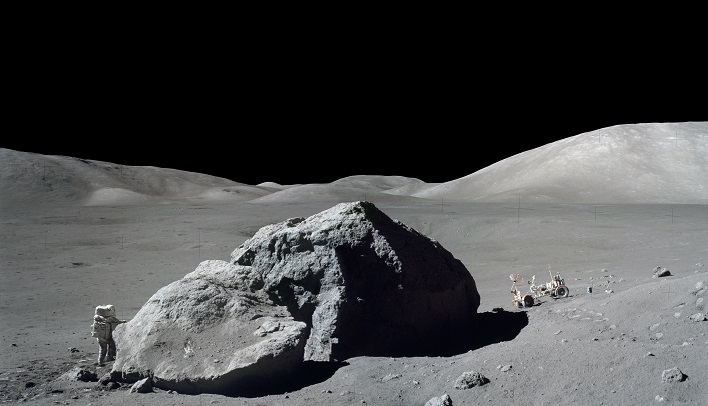Scientists Think They Finally Know What's Been Causing Mysterious Moon Tremors

NASA's Lunar Seismic Profiling Experiment's (LSPE) system objectives during the Apollo 17 mission were to determine lunar characteristics, such as internal structure and composition, the state of the interior, the composition of the atmosphere, and the genesis of surface features. The space agency hoped to gain a greater understanding of the geology and geophysics of the Earth through the experiments. Now, a group of researchers from the California Institute of Technology (Caltech) have reexamined the seismic data collected during the Apollo mission with their own machine-learning model.
In the research paper recently published in the Advancing Earth and Space Sciences Journal, the researchers remarked, "We found that thermal moonquakes are split into two main classes: (a) impulsive, high-amplitude events that are produced by the lunar module descent vehicle located east of the LSPE array in response to rapid temperature transitions during sunrise and sunset and (b) emergent events, that are natural responses to incident sunlight whose duration is directly linked to the temperature of the regolith." The hypothesis given by the team is the correlation between temperature and emergence could possibly be due to changes in regolith scattering, or perhaps higher energy daytime events occurring farther away.

Those supposed moonquakes turned out not to be tremors at all. Researchers were able to triangulate the source of the signal. They revealed that the morning quakes originated from the Apollo 17 lunar lander base, which is a few hundred meters away. Instead of being tremors, those signals being detected by the seismic array were vibrations from the structure heating and expanding in the morning.
"Every lunar morning when the sun hits the lander, it starts popping off," explained Allen Husker, co-author of the study. "Every five to six minutes, another one, over five to seven Earth hours. They were incredibly regular and repeating."
Knowledge of the moonquakes that are not attributed to the lander will help make future crewed Artemis missions to the Moon's surface safer with the knowledge that these moonquakes occur regularly. The tremors are like a "Lunar Alarm Clock," which astronauts can utilize during planned missions to set up a lunar base in the future. The quakes are too faint to be felt by a human standing on the lunar surface. Still, the new insights will also provide NASA and other space agencies with important data when designing landers as to the thermal contraction and expansion of those spacecraft.
"It's important to know as much as we can from the existing data to design experiments and missions to answer the right questions. The Moon is the only planetary body other than the Earth to have had more than one seismometer on it at a time. It gives us the only opportunity to thoroughly study another body," remarked Husker.


